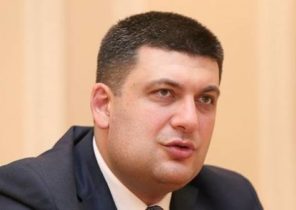
We ingest antioxidants like it is a magical elixir capable of prolonging our lives. However, in the best case they are simply ineffective, and at worst can reduce our earthly journey. Columnist for BBC Future explains why.
Linus Pauling made a serious mistake when he decided to make some changes in the traditional Breakfast.
In 1964, at the age of 65 years, he began to add vitamin C to orange juice drank in the morning.
It’s like that to add the sugar in Coca-Cola, but he was sincerely and zealously believe that it is useful.
Before that his Breakfast could hardly be called unusual. Special mention deserves only that he had Breakfast early in the morning before heading to work at the California Institute of technology, even on weekends.
He was tireless, and his work is exceptionally fruitful.
At the age of 30 years, for example, he proposed a third fundamental law of interaction of atoms in molecules based on the principles of chemistry and quantum mechanics.
Twenty years later his work on the structure of proteins (the building blocks of all living things) helped Francis Crick and James Watson in 1953 to decipher the structure of DNA (coding the material).
The following year Pauling was awarded the Nobel prize in chemistry for his research into the nature of chemical bonds.
Nick lane, a biochemist from University College London, in 2001, wrote about it in his book “Oxygen”: “Pauling…was a colossus of science of the XX century, whose works laid the foundations of modern chemistry.”
But then came “the age of vitamin C”. In his 1970 bestseller called “How to live longer and feel better” Linus Pauling stated that additional intake of this vitamin helps to cope with the cold.
He took 18,000 mg (18 g) of this substance per day, and this, incidentally, is 50 times above the recommended daily allowance.
In the second edition of this book to the list of diseases that effectively treats vitamin C, were added and the flu.
In the 1980-ies, when the United States began to spread HIV, Pauling said that vitamin C can cure from this virus.
In 1992, about his ideas, wrote Time magazine, the cover of which sported the headline: “the Real power of vitamins”. They were presented as a cure for cardiovascular diseases, cataracts and even cancer.
“Even more tempting assumption that the vitamins can slow the aging process”, — was stated in the article.
Sales of multivitamins and other food supplements soared, and the glory of Polling.
However, his scientific reputation, on the contrary, suffered. Research conducted for several years, has not confirmed the benefits of vitamin C and other supplements.
In fact, each tablespoon of vitamin that Pauling was added to your orange juice, was more likely hurt and not help his body.
Not only has science refuted his judgment, but found them quite dangerous.
The theory of Pauling’s was based on the fact that vitamin C relates to antioxidants — a special category of natural compounds, which also belong to the vitamin E, beta-carotene and folic acid.
They neutralize the highly active molecules known as free radicals, and are therefore considered useful.
In 1954, Rebecca Gershman, who was working at the University of Rochester, new York, for the first time revealed associated with these molecules the danger.
In 1956, her hypothesis was developed by Denham Harman from the Laboratory of medical physics at the University of California at Berkeley, who said that free radicals are the cause of the destruction of cells, various diseases and, ultimately, aging.
Throughout the XX century, scientists continued to explore this topic, and soon Harman’s ideas have been universally recognized.
Here’s how it works. The process begins with mitochondria, the microscopic engines within our cells.
Inside their membranes, the nutrients and oxygen are recycled to water, carbon dioxide and energy.
So is cellular respiration — mechanism as a source of energy for all complex life forms.
“Flowing water mills”
But all is not so simple. In addition to nutrients and oxygen, this process requires a constant flow of negatively charged particles — electrons.
The flow of electrons passes through four protein located in the membranes of mitochondria, which can be compared with watermills. He is involved in the production of the final product — energy.
This reaction is the basis of all our activities, however, it’s not perfect.
Electrons can “leak” from the three mills of the cell and react with nearby oxygen molecules.
The result is the formation of free radicals — highly active molecules with a free electron.
To regain stability, free radicals cause serious damage to the surrounding systems, taking electrons from vital molecules such as DNA and proteins — to maintain its own charge.
Harman and many others have argued that, despite its small scale, the formation of free radicals gradually causes damage to the body, causing mutations that lead to aging and such related diseases like cancer.
In short, oxygen is the source of life, but it can also be a factor in aging, disease and finally death.
Once free radicals are linked with aging and disease, they were seen as enemies who must be expelled from our body.
In 1972, for example, Harman wrote: “the Decrease in the number of [free radicals] in the body, is expected to reduce the rate of biological decay, thereby giving the person an additional healthy life years. I hope that [this theory] will lead to fruitful experiments aimed at increasing the healthy life expectancy of man.”
He talked about antioxidants — molecules accepting electrons from free radicals and reducing the level of outbound threats from them.
But the experiments, which he hoped was carefully carried out and repeated many times over several decades. However, their results were not very convincing.
For example, in 1970-ies and 80-ies of the various supplements that contain antioxidants given to mice, the most common laboratory animals — with food or by injection.
Some of them have even undergone genetic modifications to the genes responsible for certain antioxidants were more active than ordinary mice.
The scientists used various methods, but obtained very similar results: the abundance of antioxidants do not slow aging and prevent disease.
“Nobody has been able to reliably prove that they (antioxidants are — Ed.) can prolong life or improve health, says Antonio Enriquez of the National research center of cardiovascular diseases in Madrid, Spain. — To Supplement the mouse almost didn’t react”.
What about the people? In contrast to our younger brothers, members of our society scientists can’t put in the lab to monitor their health status throughout life, and to exclude all external factors that can affect the final result.
The only thing they can do is to organize long-term clinical study.
Its principle is very simple. First you need to find a group of people of approximately the same age, living in one place and leading similar lifestyles. Then you need to divide them into two groups.
The first one receives a Supplement that you want to test, while the second one — tablet-a pacifier, or a placebo.
To ensure the purity of the experiment to the completion of the study no one needs to know what members — even those who gives out the pills.
This method, known as a double-blind study, considered the standard in pharmaceutical research.
Since the 1970-ies the scientists have conducted many such experiments, trying to figure out how antioxidant supplements affect our health and life expectancy. The results were disappointing.
For example, in 1994, was arranged in Finland a study involving 29 133 smokers aged 50 to 60 years.
In the group taking supplements with beta-carotene, the incidence of lung cancer increased by 16%.
Similar results gave the U.S. a study of women who were postmenopause.
They took folic acid (a type of vitamin B) every day for 10 years, and after that the risk of breast cancer, they have increased by 20% compared to those who did not take this Supplement.
Then it got even worse. A study involving more than 1000 heavy smokers, published in 1996, had to stop about two years before the appointed time.
After only four years of supplementation with beta-carotene and vitamin A number of cases of lung cancer increased by 28% and deaths by 17%.
And it’s not just numbers. In the group taking supplements each year, died on 20 more than in the placebo group.
This means that for a four-year study died at 80 more.
The authors stated: “the results of the study give strong grounds for rejection of supplementation with beta-carotene, and beta-carotene in combination with vitamin A”.
Fatal ideas
Of course, these noteworthy studies do not give us the full picture. Some tests have proved the benefits of antioxidants, especially in cases when their participants were not able to eat properly.
However, the findings of scientific review 2012, compiled on the basis of 27 clinical trials of the effectiveness of different antioxidants, evidence against the latter.
Only seven of the studies the supplementation was to some extent beneficial to health: decreased risk of cardiovascular diseases and pancreatic cancer.
Ten studies showed no benefit of antioxidants — the results were the same as if all the patients received a placebo (though in fact it was not).
The results of the remaining 10 studies had indicated that many patients were in significantly worse condition than before the intake of antioxidants. In addition, among them increased incidence of lung cancer and breast cancer.
“The suggestion that supplementation with antioxidants is a magic cure, there is absolutely no reason,” says Enriquez.
Linus Pauling did not even know that his own ideas can be deadly.
In 1994, even before the publication of the results of numerous large-scale clinical studies, he died from prostate cancer.
Vitamin C was not a panacea, although Pauling until the very last breath stubbornly insisted on it. But whether its increased consumption with additional risk?
It’s unlikely we’ll ever know that for sure. However, given that many trials have linked the intake of antioxidants with cancer, it is not impossible.
For example, a study of National cancer Institute, published in 2007, showed that men who took multivitamins, risk of dying from prostate cancer was two times higher than those who did not.
And in 2011 a similar study involving 35 533 healthy men found that supplementation with vitamin E and selenium increased the risk of prostate cancer by 17%.
Since Harman proposed his famous theory about free radicals and aging, scientists gradually began to abandon the clear separation of antioxidants and free radicals (oxidants). Now it is considered obsolete.
Antioxidant is just a name that does not reflect the nature of a substance to the fullest.
Take, for example, so beloved Pauling and vitamin C. the right dosage it neutralizes highly reactive free radicals, taking them a free electron. He becomes the “molecular Martyr”, taking the hit and protecting the surrounding cells.
However, by adopting electron it becomes a free radical that can damage cell membranes, proteins and DNA.
In 1993, he wrote a chemist in the food industry William porter, “[vitamin C] is a true two-faced Janus, Dr. Jekyll and Mr. Hyde, an oxymoron of antioxidants”.
Fortunately, under normal circumstances, the reductase enzyme is able to restore vitamin C to its antioxidant form.
But what if vitamin C so much that enzyme doesn’t have time to deal with it?
Despite the fact that this simplification of complex biochemical processes is not able to reflect the essence of the problem, the results of the above clinical studies indicate that what it may bring.
Divide and conquer
The antioxidants has its dark side. In addition, even their bright side doesn’t always work for our good — in the light of the emergence of a growing number of evidence that free radicals are also important for our health.
We now know that free radicals often function as molecular transmitters that send signals from one part of cell to another. So they regulate the processes of growth, division and cell death.
At every stage of the existence of a cell free radicals play a very important role. Without them, cells would continue to grow and divide uncontrollably — a process called cancer.
Without free radicals, we are also more likely to be infected infections. Under stress, caused by penetration into the human body unwanted bacteria or viruses, free radicals start to develop more actively, acting as a silent signal to the immune system.
In the result, the cells that stand at the forefront of our immune defense, macrophages and lymphocytes begin to divide and deal with the problem. If it’s a bacterium, they will swallow it like a blue pacman Ghost in the popular computer game.
The bacteria will be trapped but still alive. To fix this, free radicals re-enter the business.
Inside immune cells, they are used for, which got a bad reputation for murder and destruction. The intruder apart.
From the beginning to the end of a healthy immune response depends on the presence in the body of free radicals.
Genetics Joao Pedro Magallanes and George Church wrote in 2006: “Fire is dangerous, but people have learned to use it to their advantage. Similarly, the cells seem to have developed control mechanisms and use of [free radicals]”.
In other words, to get rid of free radicals with antioxidants is not necessary.
“Then we will be defenseless against certain infections,” says Enriquez.
Fortunately, the human body is the system responsible for the maintenance of the stability of biochemical processes.
In the case of antioxidants, their surplus is removed from the bloodstream into the urine. “They are simply excreted naturally,” says Fish Villanueva from the National Polytechnic Institute of Mexico.
“The human body has an incredible ability to bring everything into balance, so the effects [of supplementation] in any case, will be moderate and we should be grateful for it,” says lane.
The risks associated with oxygen, we began to adapt even when the first organisms began to breathe this toxic gas, and to change what was created over billions of years of evolution, a simple pill can not.
No one can deny that vitamin C is an essential part of a healthy lifestyle, as well as all the antioxidants.
But, with the exception of cases when these supplements prescribed by your doctor, a healthy diet is the best way to prolong his life.
“Intake of antioxidants is justified only when the body is a real shortage of a particular substance, says Villanueva. — It is best to obtain antioxidants from foods that contain a certain set of antioxidants operating in the complex.”
“A diet rich in fruits and vegetables tend to be very useful, says lane. — Not always, but in most cases it is.”
Despite the fact that the benefits of this power is often attributed to antioxidants, their role here is played a healthy balance of Pro-oxidants and other substances, whose value is not known.
Tens of years, scientists have tried to understand the complex biochemistry of free radicals and antioxidants, attracted to his research, hundreds of thousands of volunteers and spent on clinical trials millions, but modern science still cannot offer us anything better than the Council, known to us from school: eat five vegetables or fruits every day.







